The Museum of Flight in Seattle, Washington, is the largest independent, non-profit air and space museum in the world. It has more than 175 aircraft and spacecraft. On display in the museum’s covered outdoor pavilion are several U.S. Navy aircraft.
The history of naval airplanes in Britain dates to 1908 and in France to 1910. In the United States, naval aviation began in 1911, when Glenn Curtiss convinced the Navy to appropriate $25,000 to purchase three airplanes. In 1914, the first permanent naval air station was established in Pensacola, Florida.
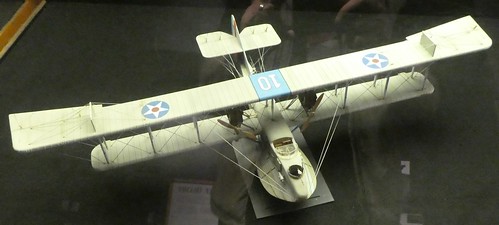 Shown above is a model of the 1914 Curtiss Model H-16.
Shown above is a model of the 1914 Curtiss Model H-16.
 Shown above are naval fighter aircraft.
Shown above are naval fighter aircraft.
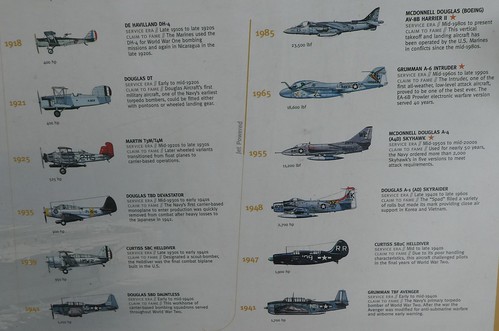 Shown above are naval attack aircraft.
Shown above are naval attack aircraft.
Carrier-based airplanes must be able to launch in a short distance and they must be sturdy enough to come to a sudden stop on a pitching flight deck. In addition, they must be stored in below-decks hangars which have small spaces.
Grumman F-14A Tomcat
The F-14 Tomcat, first developed in 1970, was adopted by the U.S. Navy in 1972 and retired from service in 2006. According to the display:
“The F-14’s wings swing forward and aft, allowing for both supersonic speeds and low-speed handling during aircraft carrier landings.”
The F-14 has a top speed of 1,544 mph, a cruising speed of 633 mph, and a range of 2,400 miles.
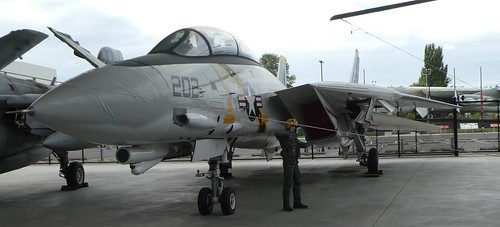
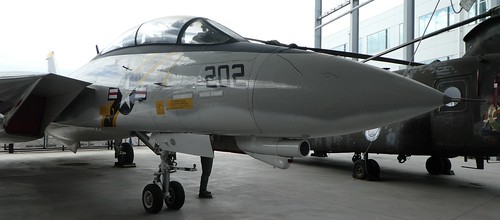

Grumman EA-6B Prowler
In 1966, the U.S. Navy requested a new electronic countermeasure (ECM) aircraft based on the Grumman A-6 Intruder. According to the display:
“The Prowler was designed with advanced avionics and a tactical jamming system that is carried in external pods under the aircraft to disrupt communication and gather intelligence from enemy transmissions.”
The Prowler first flew in 1968 and was adopted by the Navy in 1972. According to the display:
“In a strike mission the EA-6B is assigned to suppress the enemy’s air defenses. This included detecting and jamming enemy radar systems, communication and neutralizing enemy surface-to-air missiles (SAMs).”
The Prowler has a top speed of 599 mph, a cruising speed of 466 mph, and a range of 2,475 miles. It carries a pilot and three electronic countermeasure officers.
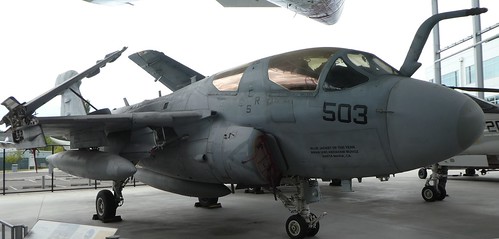


Grumman A-6E Intruder

Developed in 1960, the A-6E Intruder saw action in Vietnam. According to the display:
“The aircraft had advanced avionics, an efficient wing design, and heavy payload capacity. The A-6 deployed from aircraft carriers as well as land bases to operate wherever it was needed.”
The Intruder has a top speed of 644 mph, a cruising speed of 474 mph, and a range of 1,010 miles.

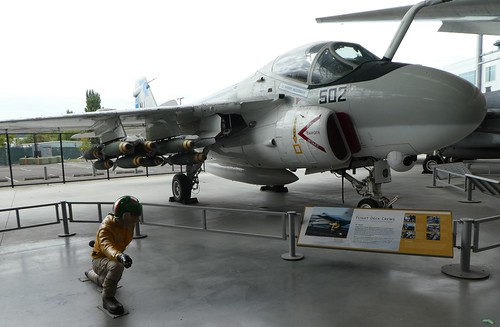

Hawker Siddeley/McDonnell Douglas AV-8C Harrier
The Harrier was the first vertical and/or short take-off and landing (V/STOL) attack aircraft. In 1971, it entered service with the United States Marine Corps. This aircraft has a top speed of 730 mph and a ferry range of 1,750 miles.
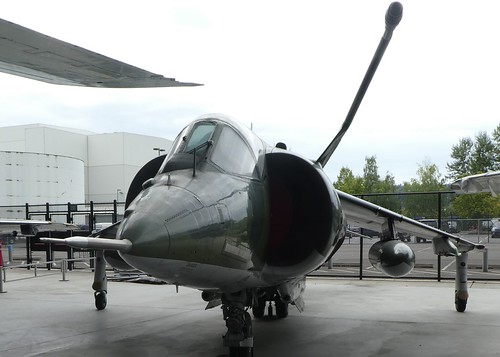




Douglas A-4F Skyhawk
The A-4F Skyhawk began service in the U.S. Navy and Marine Corps in 1956 and flew combat missions in Vietnam. Over a period of 26 years, a total of 2,960 were built. It has a top speed of 673 mph and a range of 2,000 miles.
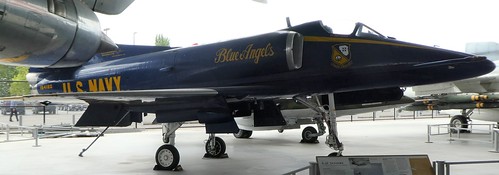
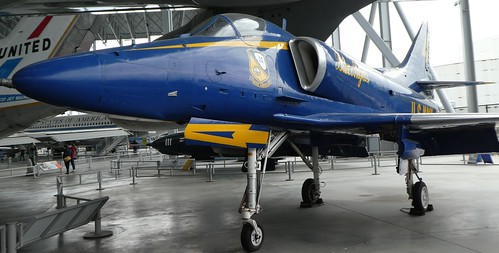

Grumman F9F-8 Cougar
The F9F-8 Cougar was developed from the F9F Panther and incorporated a swept-wing design and increased thrust. It was delivered in November 1952, too late for combat in Korea. A total of 1,988 were built.
The Cougar has a top speed of 647 mph, a cruising speed of 516 mph, and range of 600 miles.
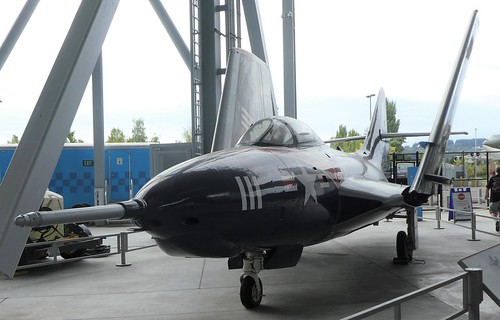


More airplane photo tours
Planes of Fame: Some Naval Aircraft (Photo Diary)
Museum of Flight: World War II bombers (photo diary)
Historic Flight: Grasshopper, Texan, Spitfire (photo diary)
WAAAM: Curtiss-Wright Airplanes (Photo Diary)
Evergreen Aviation: Sea Planes and Sailplanes (photo diary)
Stonehenge Air Museum: Biplanes (Photo Diary)
Yanks Air Museum: World War II Fighters (Photo Diary)
Museum of Flight: The First Fighter Plane (photo diary)


